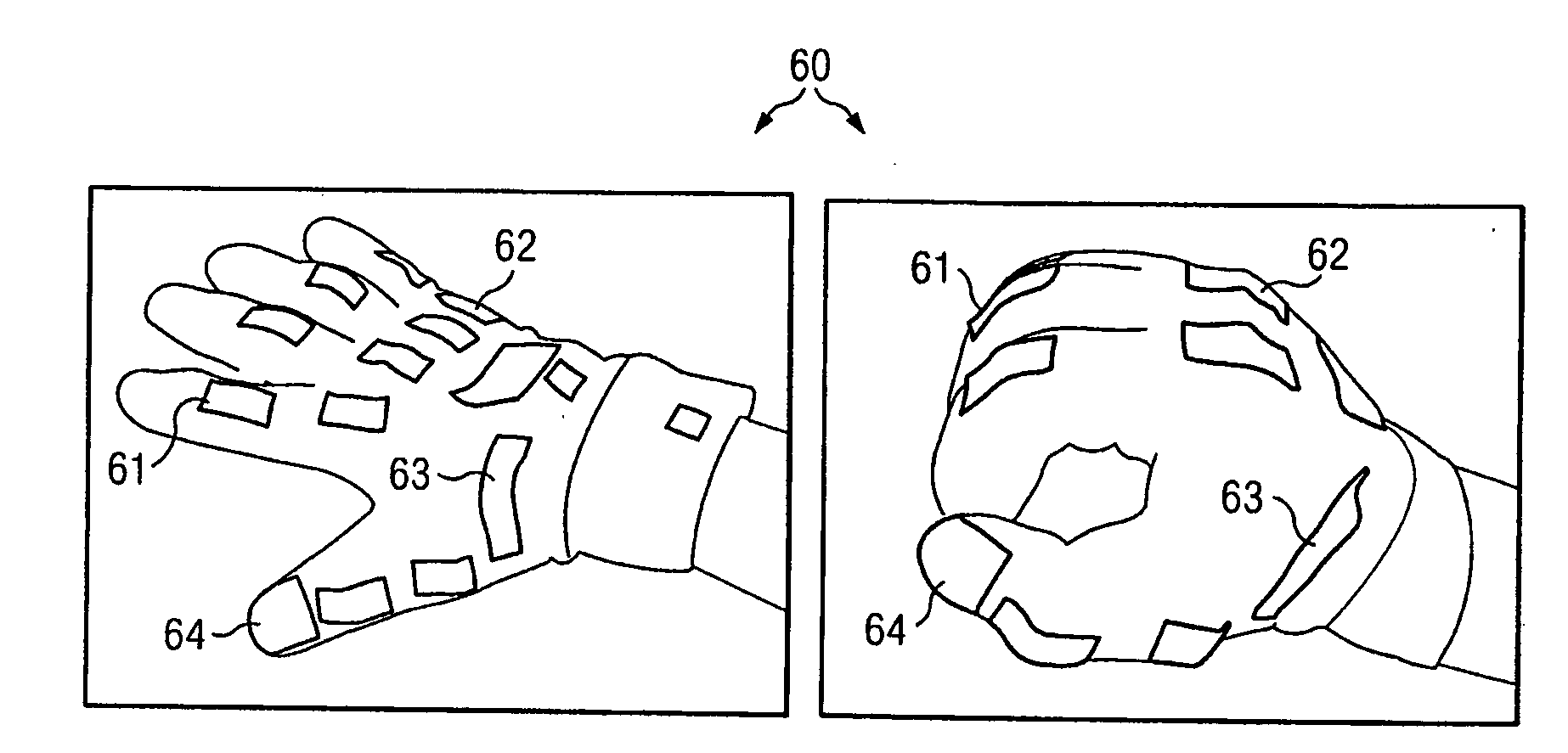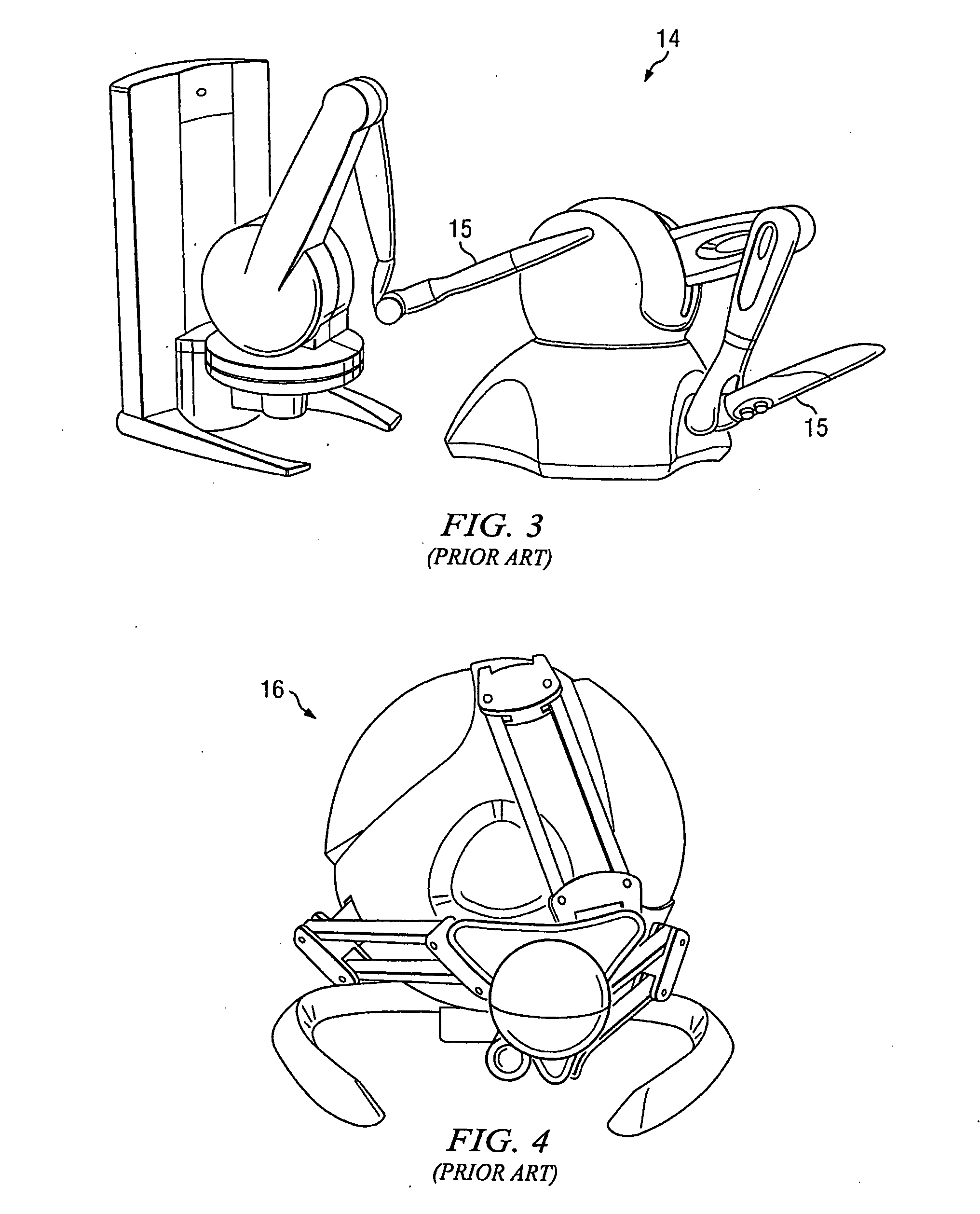Multi-user smartglove for virtual environment-based rehabilitation
a virtual environment and multi-user technology, applied in the field of stroke hand and finger movement rehabilitation devices and systems, can solve the problems of stroke remaining the leading cause of disability among adults, loss of income and benefits such as health care, and the need for daily living assistance, and the length of physical therapy sessions to be shorter. , to achieve the effect of improving patient motivation and compliance, improving hand function, and improving hand function
- Summary
- Abstract
- Description
- Claims
- Application Information
AI Technical Summary
Benefits of technology
Problems solved by technology
Method used
Image
Examples
embodiment 70
[0120]Referring to FIG. 11, a first input device embodiment 70 includes bend sensors 71, 72, and 73, which are disposed on the back of the input device 92 on finger portions that are in registration with the patient / user's index, middle, and ring fingers. To reduce weight and cost, a sensor on the pinky finger, whose movement generally follows that of the adjacent ring finger very closely, is optional. As shown in FIG. 12, a bend sensor 74 can also be disposed on the back of the input device 92 in registration with the thumb and a bend sensor 75 can be disposed on the input device 92 at the base of the palm of the hand. The latter bend sensor 75 is adapted to bend as the heel of the thumb crosses the palm to oppose one or more of the fingers, e.g., during a pinch motion.
[0121]Referring to FIG. 13, a two-dimensional bend sensor 77, which is disposed on the back of the input device 92 in registration with the wrist and oriented along the axis of the ulna, is provided to capture wrist ...
embodiment 60
[0124]Referring to FIG. 15, a second glove embodiment 60 is shown. The glove 60 includes bend sensors 61 and 62 that are disposed, respectively, on the metacarpalphalangeal (MCP) joint and the proximal interphalangeal (PIP) joint of the thumb and of each finger, including the pinky finger. The MCP and PIP bend sensors 61 and 62 are adapted to record arcuate bend data associated with the motion or movement of each finger. A third bend sensor 63 is disposed on the back of the hand at the base of the thumb. For measuring wrist flexion / extension, a bi-directional bend sensor (not shown) is disposed to extend across the wrist on the palm side of the glove 60.
[0125]Optionally, a switch pad 64, e.g., a capacitive touch sensor, can be disposed on or within the tip of the thumb portion of the glove 60 for providing and recording pinch data. In operation, when the tip of one or more of the glove fingers contacts, i.e., activates, the switch pad 64, the controller is adapted to use the touch d...
embodiment 50
[0128]A Hall effect glove embodiment 50 is shown in FIGS. 17-19. Single bend sensors covering both the MCP and PIP joints 51 are disposed on each of the finger portions of the glove 50. A plurality, e.g., three, bend sensors 52-54 are disposed on the thumb portion of the glove 50. A bend sensor 52 is disposed between the thumb portion and the index finger portion of the glove 50 to track relative movement between the fingers and the thumb, another bend sensor 53 is disposed along the axis of the thumb portion to track movement of the thumb, and a third bend sensor 54 is disposed at the base of the thumb portion of the glove 50 to measure roll of the wrist joint as the patient / user's thumb reaches across the palm.
[0129]To measure finger pinch, on the palm side of the glove 50, Hall effect sensors 56 are disposed on the tips of each glove finger and a magnetic field generating device 57, e.g., a magnet, is disposed at or near the tip of the glove thumb. When the magnetic field from th...
PUM
 Login to View More
Login to View More Abstract
Description
Claims
Application Information
 Login to View More
Login to View More - R&D
- Intellectual Property
- Life Sciences
- Materials
- Tech Scout
- Unparalleled Data Quality
- Higher Quality Content
- 60% Fewer Hallucinations
Browse by: Latest US Patents, China's latest patents, Technical Efficacy Thesaurus, Application Domain, Technology Topic, Popular Technical Reports.
© 2025 PatSnap. All rights reserved.Legal|Privacy policy|Modern Slavery Act Transparency Statement|Sitemap|About US| Contact US: help@patsnap.com



